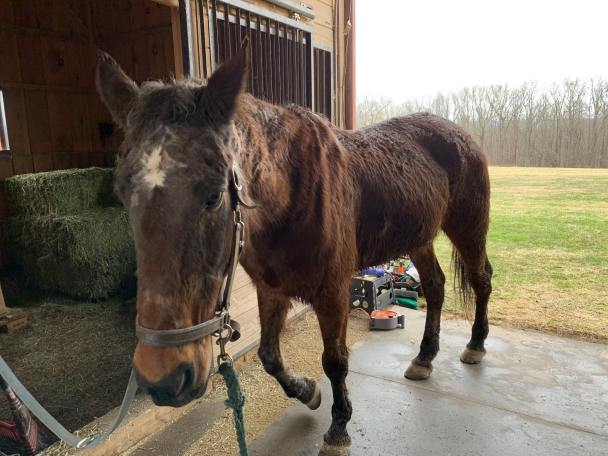
The Most Popular Horse Breeds Of 2019
Equestrian Advice & Guides General Equestrian
Build your business profile for FREE and expose your services to thousands of potential clients!
Create my profile now!
Last October, I adopted a standardbred rescue horse who had been overworked and undernourished in rural communities and subsequently sent to auction for slaughter, a cruel and painful ordeal for horses. In his early life, Spyri was a trotter, making money for an owner who did not take care of his future after his racing career ended. The Standardbred Retirement Foundation saves as many as they can, puts them through quarantine, contacts previous owners and others to raise funds, and cares for them in their facilities in Kentucky, New York, Virginia, and New Jersey while they seek foster and permanent homes for these amazing animals.
Spyri came to me in dire straits: neglected, starving, dirty, and weak, but with a sweet disposition and a willingness to hope and trust in a new human sponsor. In the past six months, with the help of his team of owner, barn helper, vet, farrier, and a professional clipper, we discovered one of his main problems and how to solve it. He was very thin and hirsute when he arrived, and the vet immediately tested him for Cushing's disease. A positive result led us to Prascend, a medication to help his body function properly. Subsequent blood tests have shown that his levels are now normal, and he has gained enough weight to be healthy.
Since the beginning, he has been extremely itchy to the point of frenzy. The vet suggested putting him on an antihistamine and using low dust shavings. Neither helped, but we did plan to
clip Spyri and give him a medicated bath in warm weather. I have a small barn with no hot water, and I thought it too much of an ordeal for the horse to transport him to a place where he could be inside for a bath with hot water. During Covid times, people are reluctant to have visitors anyway. Since he probably had not had a bath in years and probably never with a medicated shampoo, I prepared and waited.
One sunny day in March when higher temperatures brought us a much needed break from the winter, I asked a professional clipper with heavy equipment that could manage a Cushing’s horse to come out to do the job. First, I had to bathe him. He loved the experience, but I underestimated the amount of time it would take for him to dry off with all that hair! I had to go over him several times with soap and water just to get the job done, but it was a joy to bring some relief and play in the sudsy water with Spyri!.
The clipping pleased him as well, and he stood like a statue for us. Once the thick hair had carpeted the barn floor and we had clipped him completely, we found the source of the problem: lice! The poor horse was infested and probably had been since he was at auction almost a year before he came to me.
Laura Decker of Decker Equine, clipper and equestrienne extraordinaire, patiently and lovingly clipped him thoroughly, sprayed him with alcohol to kill the living pests, and restored Spyri’s peace of mind. I had never seen such an infestation! The nits, or larva, are not phased by alcohol, but pyrethrin sprays and Ivermectin will kill them. The vet recommended Ivermectin once a week for three weeks which has done the trick! I treated my other horses as well as lice can be transferred among animals, but not to humans. That is a relief! Nevertheless, Laura and I disinfected everything including ourselves.
Lice are parasites that inhabit the hair or fur of animals. Equine lice come in two varieties: one that chews and bites hair and dander (haematopinus asini) and one that bites and sucks blood (damalinia equi). Horses that spend time in dirty conditions such as kill pens, auctions, or among rural communities often contract lice. The itching can be severe to the point where horses will scratch through a layer of skin to open sores.
Once we discovered the presence of lice on my horse, it was easy enough to treat and to provide relief from the frenetic itching. Lice may be hard to see on a healthy horse, let along a Cushing’s horse with thick hair. Every brush, blanket, and anything else had to be cleaned and sanitized, and of course, we need to keep up on bathing and using ointments on his troubled skin now that the Ivermectin has killed off all the pests. As I washed away the problem, deep thoughts of frustration and sadness about the way some people treat animals troubled my soul. How can this happen to these wonderful horses? In a small way, for one equine individual, I am able to provide relief, love, and sanctuary, and for that, I am most grateful, yet worried about all the other ones who still need help and homes.

